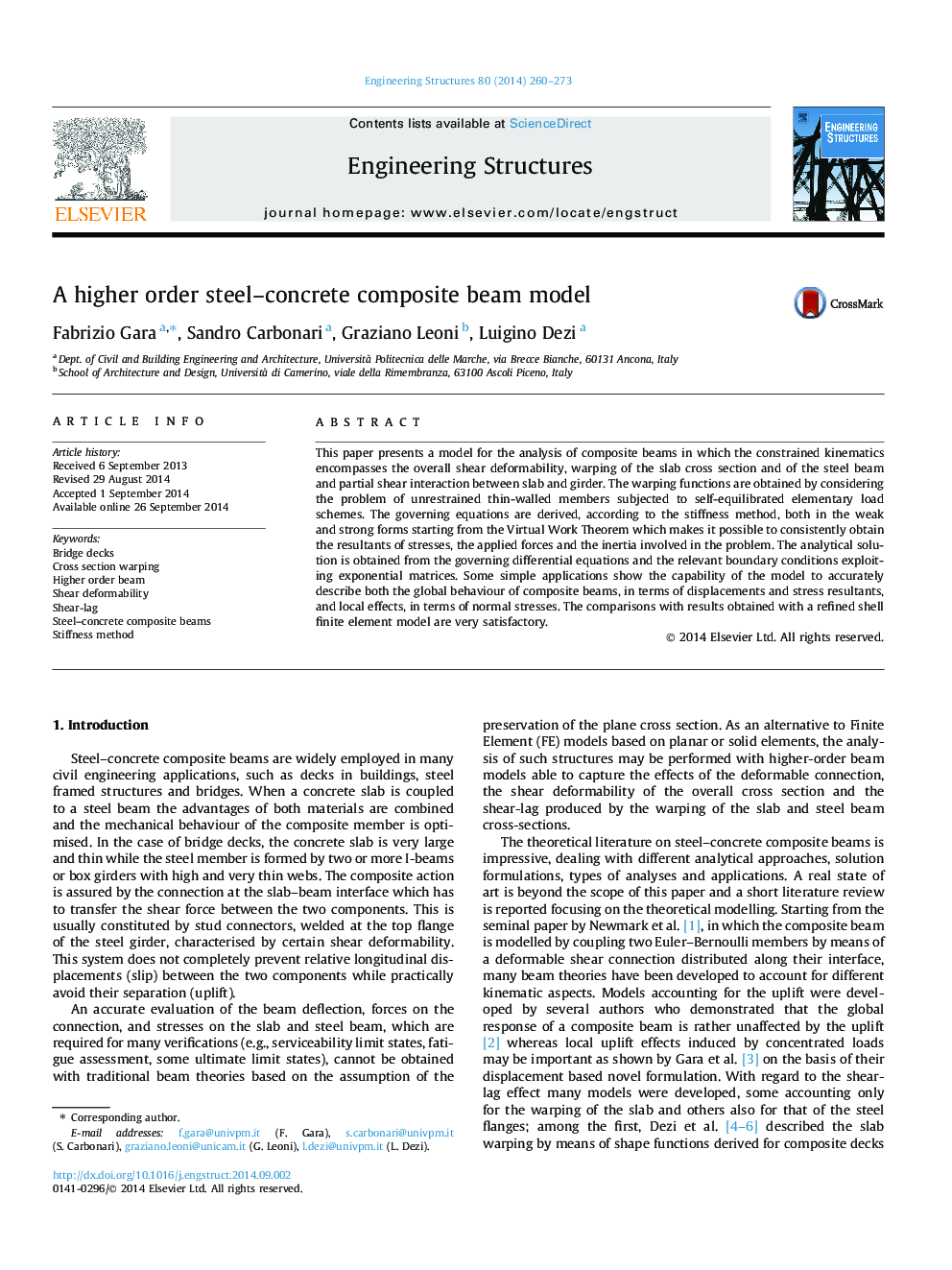| Article ID | Journal | Published Year | Pages | File Type |
|---|---|---|---|---|
| 266368 | Engineering Structures | 2014 | 14 Pages |
•Higher order numerical model for steel–concrete beams with partial shear interaction.•Shear-lag effects and shear deformability of concrete and steel members are included.•Warping functions derived from unrestrained self-equilibrated thin-walled members.•Problem solution achieved analytically exploiting potentials of exponential matrices.•Applications demonstrate the model accuracy in terms of stresses and displacements.
This paper presents a model for the analysis of composite beams in which the constrained kinematics encompasses the overall shear deformability, warping of the slab cross section and of the steel beam and partial shear interaction between slab and girder. The warping functions are obtained by considering the problem of unrestrained thin-walled members subjected to self-equilibrated elementary load schemes. The governing equations are derived, according to the stiffness method, both in the weak and strong forms starting from the Virtual Work Theorem which makes it possible to consistently obtain the resultants of stresses, the applied forces and the inertia involved in the problem. The analytical solution is obtained from the governing differential equations and the relevant boundary conditions exploiting exponential matrices. Some simple applications show the capability of the model to accurately describe both the global behaviour of composite beams, in terms of displacements and stress resultants, and local effects, in terms of normal stresses. The comparisons with results obtained with a refined shell finite element model are very satisfactory.
